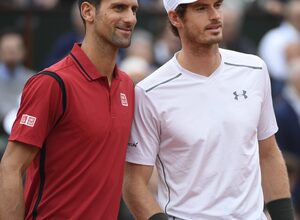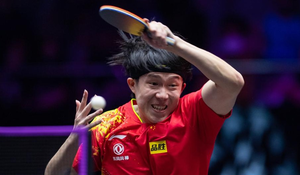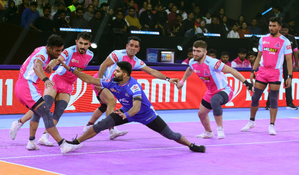CLOSE-IN: The IPL Auction is an incomprehensible maze (IANS column)
The recently concluded IPL 2024 auction held in the grand setting of a magnificent arena in Dubai was a spectacular event. It had a vibrant feel to it with each of the 8 franchise tables occupied by their respective owners, accountants, statisticians, cricketers as advisors and sharp businessmen.
Each of them huddled together to bid for a combination of players who would get them to be victorious. They would have gone through several hours of discussions, research and talent hunt to identify the right permutation and combination with options if things went awry.
The strike of the wooden gavel at the auction with the word, “Sold” when a player bid came to an end by the very astute and elegant Mallika Sagar, brought joy to the winning bidder. It took one back to the cricket days of the 70’s in Mumbai, when her father Virenchee Sagar, a cricket lover, assembled the formidable Nirlon cricket team under the legendry Sunil Gavaskar.
Those were the days of corporate cricket that had a touch of professionalism to it and where a good performance did bring a cricketer into prominence. Nirlon had a star studded side of 1st class and Test cricketers, each one hand picked for a specific need.
The glamourous franchisee’s of the IPL are now doing a similar job with heaps of research data and cricket related information to the nth degree to support their every decision.
The IPL has been a huge commercial success for the BCCI and for the entire cricket fraternity across the world. The area that has shown inconsistency is the continuous change in the franchisee’s squads.
This will be the 17th edition of the IPL in 2024 and the shuffling of players from one team to another has been an area of concern for most supporters.
The next big auction will be held next year and so a complete transformation of each side will take place which I am sure would be a headache not just for the franchise owners but also for the coaches, the support staff and the sales and marketing force.
The BCCI has to structure a system that does not need to have a yearly IPL auction. They need to find a more mature way in which a player can be bought or transferred with the basic unit remaining the same.
There is plenty of effort put in by all at the franchise end to get players comfortable and committed to them. Every side has a different culture and approach and it does take time for them to mould players to understand it.
The sponsors too need a more consistent squad to form the basis of their advertising campaign and event based marketing efforts. Unfortunately, the regular disruption that takes place makes this impossible.
The recent auction is a good example of the complete maze where the purchase of the players is concerned. One cannot understand the logic of Kolkata Night Riders and Sunrisers Hyderabad smiling through their purchase of Mitchell Starc and Pat Cummins. Both the Australian cricketers, one being the captain of the World Cup’23 winning side, performed just above average in the WC’23 tournament.
Starc has been absconding from playing in the IPL since the last 8 years, whereas, Cummins has never been a star in any of his previous outings. Captaincy is all that one could think of when the paddle went up continuously by Sunrisers for Cummins. Fitting him into the Sunrisers playing eleven itself will be a big question mark.
One still could, with a pinch of salt, understand why franchise owners would pay such a hefty sum for the two established players. However, the amount that a few of the uncapped players were bought out for, in this years’ auction and on several earlier ones, is a mystery in itself. In the initial IPL auction, there was a cap on the amount paid to an uncapped player.
The money above it was put into a kitty and distributed amongst the domestic cricketers, many of them, unfortunate enough to not make the cut. This practice came to an end, as uncapped foreign players did not have a ceiling.
The past has shown that Indian as well as foreign players who have been bought with a high tag attached to them, flounder in their performance. The complete pricing of players, one can argue, is on a free flow market basis and that’s precisely why a present franchise-owned player should be allowed to negotiate a better deal with their respective franchisees, in order to retain them.
A good example of it at present, is Rinku Singh. Indian crickets new limited overs star has shown his brilliant ability as a finisher. He did so with a flourish for Kolkata Knight Riders (KKR) in the IPL as well. His price tag is fixed at 55 lakhs, whereas, the bowler he hit for 5 sixes in an over to make KKR win against Gujarat Lions got sold for 5 crores to Royal Challengers, Bangalore.
The issue that arises presently, is that the franchise owners need to spend their 100 crores in order to buy at least the minimum lot of the stipulated Indian and International players. In order to do so, several players get lucky, even though their value to the team is far lower.
A player such as Rinku Singh, should have the opportunity to negotiate a deal with his respective franchise owner. The increase should be minus from the stipulated spend amount of the franchisee. A player needs to have a say as well. This would definitely reduce the ridiculous purchase price of new players who are capped or uncapped. Furthermore, it will also give the franchise owners the possibility of rewarding and retaining their existing players.
One of the reasons for the IPL was to unearth young and raw talent. This was to take place through academies and systems which were to be structured by the franchise owners in the State which they represented. This model seems to have got lost.
The BCCI have a super property in the IPL. They, as well as the franchise owners need to reap the maximum benefit for Indian cricket, both domestic and international. Only then will the incomprehensible maze and uncertainty created by the auction amounts be suitably resolved.
(Yajurvindra Singh is a former India cricketer. The views expressed are personal)
–IANS
bc/




